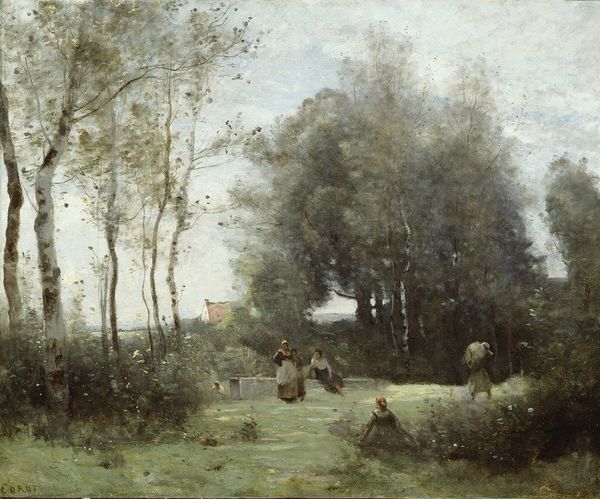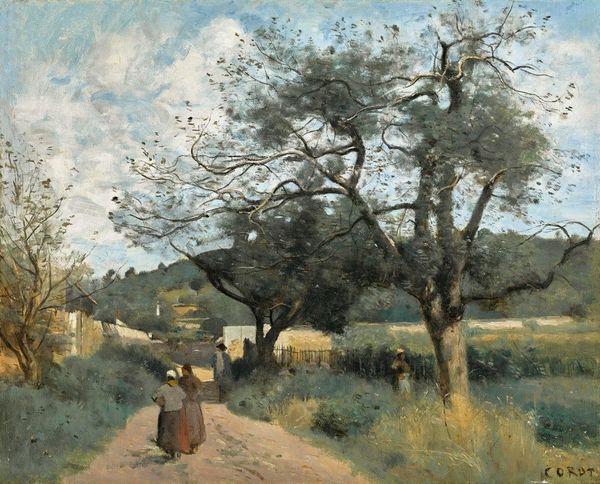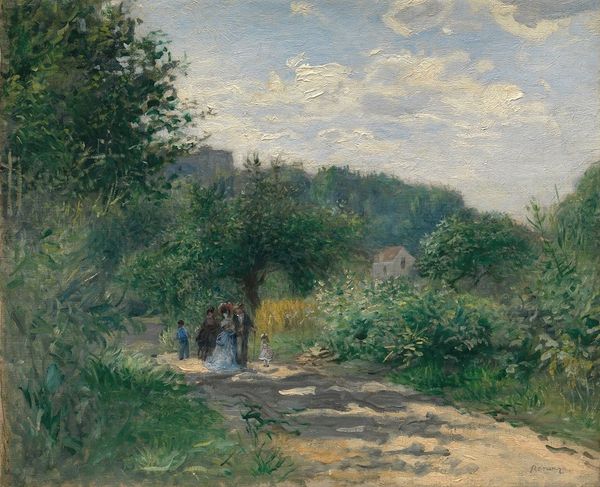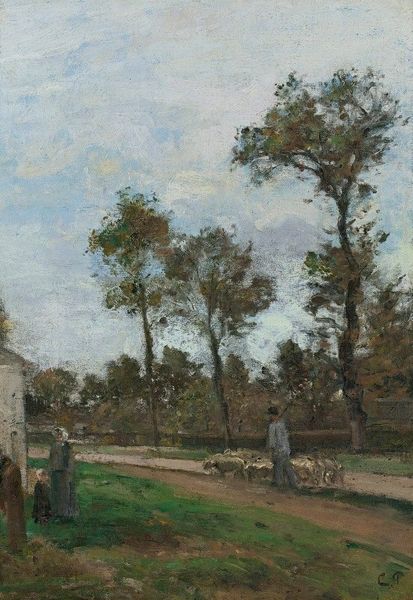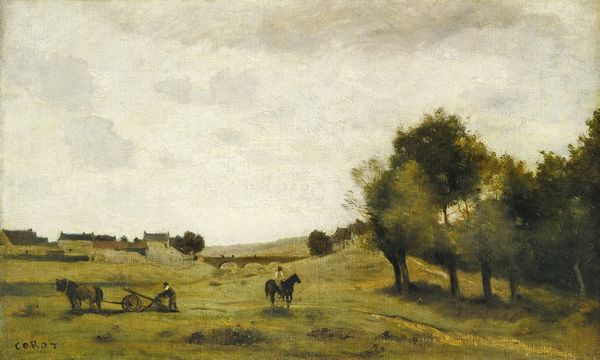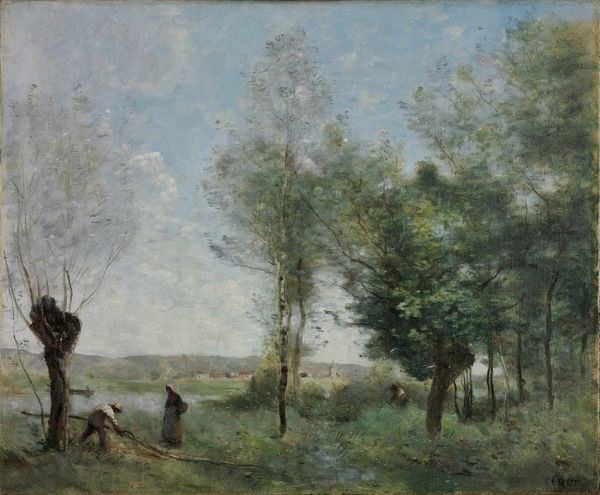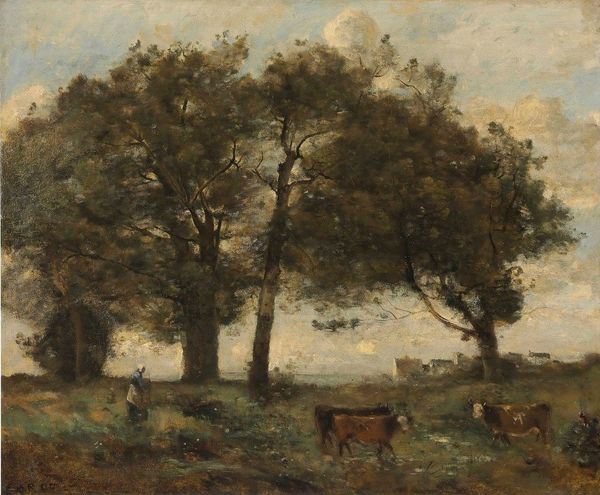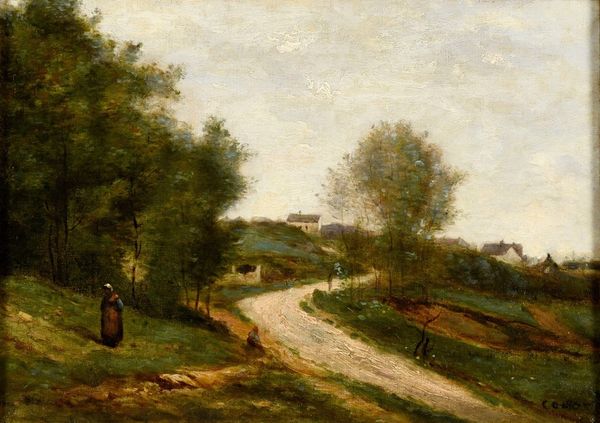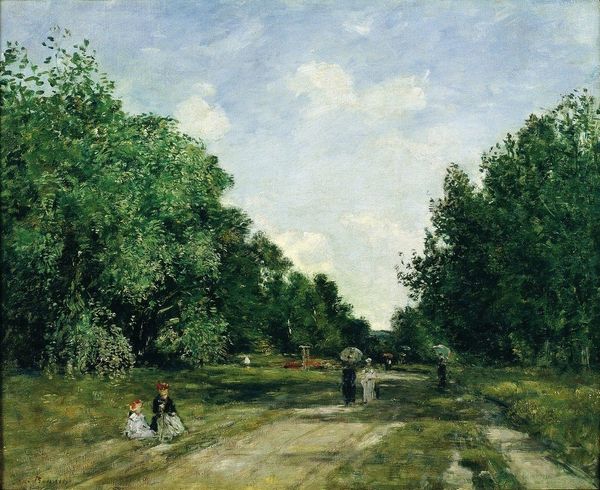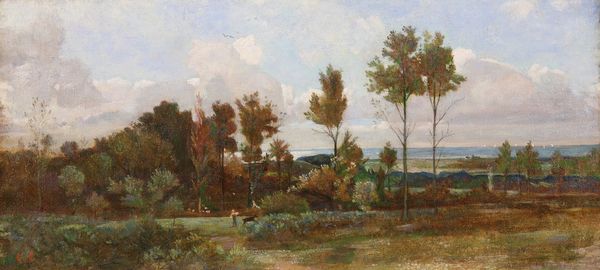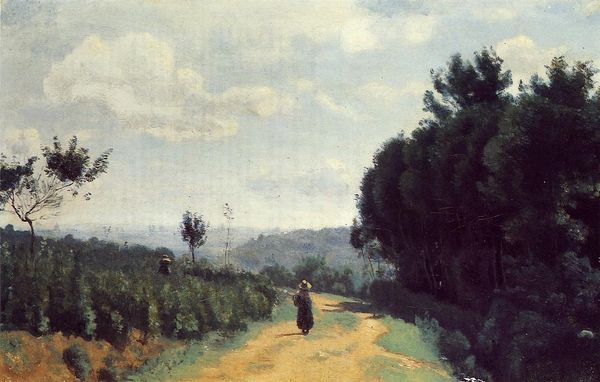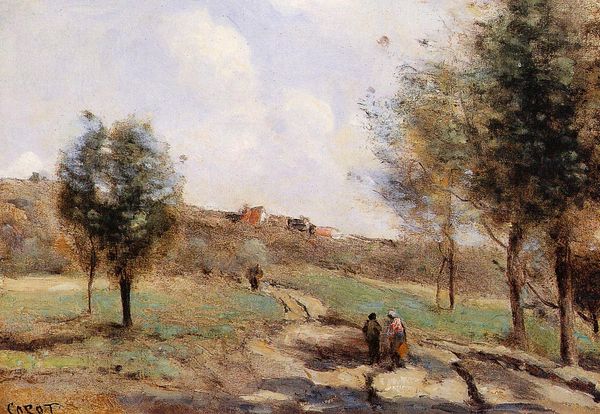
Copyright: Public Domain: Artvee
Curator: Soaked in an earthy palette, what strikes you first about Camille Corot's "Paysans Attablés À La Porte D’un Cabaret," painted around 1865-1870 using oil paints? Editor: Honestly, a sense of fatigue, but not entirely negative. A weary calmness blankets this scene, a midday stillness perhaps. You can almost smell the dirt. Curator: Yes, the materiality pulls you in! And consider the image of these peasants—at once a record of labor and an invitation for reverie. Look at how their poses hint at specific types and traditional expectations, particularly those established around "work." Editor: I find it striking how unidealized they are. It isn't about perfect figures, but an acceptance of hard living made clear in how they are arranged here outside of this tavern, made of wood, one assumes. The means of production is all in one frame. Curator: Absolutely. And their stillness is crucial. They are icons of rural life, invoking timeless archetypes but fixed in time, suspended between physical exertion and well-deserved relaxation. A simple red cap takes on greater weight, symbolizing belonging and purpose, doesn't it? Editor: Purpose certainly, but perhaps also constraint. We have fences that demarcate both property lines and modes of making and living that seem deeply ingrained, both historically and physically here in Corot's chosen tools. The materials and that dirtiness of making become very clear here. Curator: Acknowledging, then, the very unglamorous world from which this scene emerges, rather than simply indulging in some kind of nostalgia? Editor: I think Corot acknowledges the social dimensions even in this seemingly peaceful image; nothing is separate from the hand that touches the soil. Curator: A very tangible approach to rural life, made from material realities! Thank you for illuminating that aspect, connecting us to the broader human experience reflected in such carefully considered elements. Editor: Thank you. This really opened my eyes to thinking about art not just as representation but also material evidence of work and social reality.
Comments
No comments
Be the first to comment and join the conversation on the ultimate creative platform.

